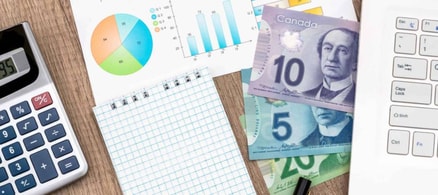Recent studies prove once again that dividend stocks have the potential to:
- Offer a plump income stream in good times and bad.
- Provide diversification to growth-oriented portfolios.
- Outperform the S&P 500 over the long haul.
Take a look at three dividend stocks that investment banking giant Barclays has given an “overweight” rating. One of them could be worth purchasing in 2022 with some extra cash.
JPMorgan Chase (JPM)
With inflation running hot, many investors are concerned about interest rate hikes from the Fed.
Banks, however, typically do well in a rising interest rate environment. They get to charge more to lend money, and higher rates signal a stronger economy in which people can afford to pay those loans.
JPMorgan Chase is the largest bank in the U.S., with an astounding US$3.8 trillion in assets. Trading at roughly US$168 per share, the stock has climbed 36% over the past year.
Barclays sees even more upside ahead in JPMorgan, as it has an overweight rating on the bank and a price target of US$202.
Business has improved a lot from the pandemic-pained days of 2020. In Q3 of 2021, JPMorgan produced US$3.74 per share in earnings, marking a 28% increase from the US$2.92 per share earned in the year-ago period.
In June, the bank announced an 11% increase to its quarterly dividend rate to US$1 per share, which comes out to an annual yield of 2.5% today.
Mind you, JPMorgan is not the only bank that gave a pay raise to shareholders this year. Peers like Goldman Sachs, Bank of America and Morgan Stanley have also increased their dividends.
If you don’t want to pick individual stocks, you can always build a diversified passive income portfolio automatically just by using your “spare change.”
A better online investing experience
Easy to use and powerful, Qtrade's online trading platform puts you in full control with tools and resources that help you make well-informed decisions.
Invest NowMicrosoft (MSFT)
Tech stocks aren’t exactly known for their dividends, but the ones with massive recurring cash flows and healthy balance sheets can deliver solid cash payouts.
Take Microsoft, for instance.
When the tech giant first started paying quarterly dividends in 2004, it was paying investors US$0.08 per share. Today, Microsoft’s quarterly dividend rate stands at US$0.62 per share, marking a total payout increase of 675%.
The stock currently offers a dividend yield of only 0.7%. But given Microsoft’s highly reliable dividend growth — management has raised the payout for 12 straight years — it remains an attractive choice for many income investors.
On Oct. 27, Barclays reiterated an overweight rating on Microsoft and raised the price target on the stock to US$363, about 10% up from current levels.
Microsoft trades at around US$330 per share at the moment. But you can own a smaller piece of the company using a popular app that allows you to buy fractions of shares with as much money as you are willing to spend.
Shell Midstream Partners (SHLX)
This one is for the real yield-hungry investors.
Shell Midstream Partners owns, operates, develops and acquires pipelines and other midstream and logistics assets. It pays quarterly distributions of US$0.30 per limited partner common unit.
With SHLX stock trading at US$12.18 per unit, that quarterly payout translates to a jaw-dropping annual yield of 10.1%.
Ultra-high-yielding stocks — especially those from the volatile energy sector — might seem too good to last. But on Oct. 19, Barclays upgraded Shell Midstream Partners from equal weight to overweight and set a price target of US$14 per unit.
Shell Midstream’s CEO, Steven Ledbetter, believes the market is undervaluing the partnership’s units and its “ability to deliver over the long term.”
“As such, we are evaluating options, such as using excess cash for a potential buyback program or increasing distributions in the future,” he said in the latest earnings conference call.
Grow Your Savings Effortlessly with Moka
Automate your savings with every purchase and watch your money multiply. Moka rounds up your transactions and invests the spare change. Start building wealth effortlessly today. Join thousands of Canadians embracing financial freedom with Moka
Sign up nowA more colorful alternative
The right dividend stock can be a solid investment. But remember, stocks of all kinds are volatile and often correlate with each other. If a market-wide downturn lies ahead, even blue-chip dividend stocks could get pummeled.
If you want something that has little correlation with the stock market — and might offer even bigger potential — check out fine art.
Contemporary artwork has outperformed the S&P 500 by a commanding 174% over the past 25 years, according to the Citi Global Art Market chart.
And it’s becoming a popular way to diversify because it’s a real physical asset with little correlation to the stock market.
On a scale of -1 to +1, with 0 representing no link at all, Citi found the correlation between contemporary art and the S&P 500 was just 0.12 during the past 25 years.
Investing in art by the likes of Banksy and Andy Warhol used to be an option only for the ultrarich. But with a new investing platform, you can invest in iconic artworks just like Jeff Bezos and Bill Gates do.
Sponsored
Trade Smarter, Today
With CIBC Investor's Edge, kick-start your portfolio with 100 free trades and up to $4,500 cash back.







